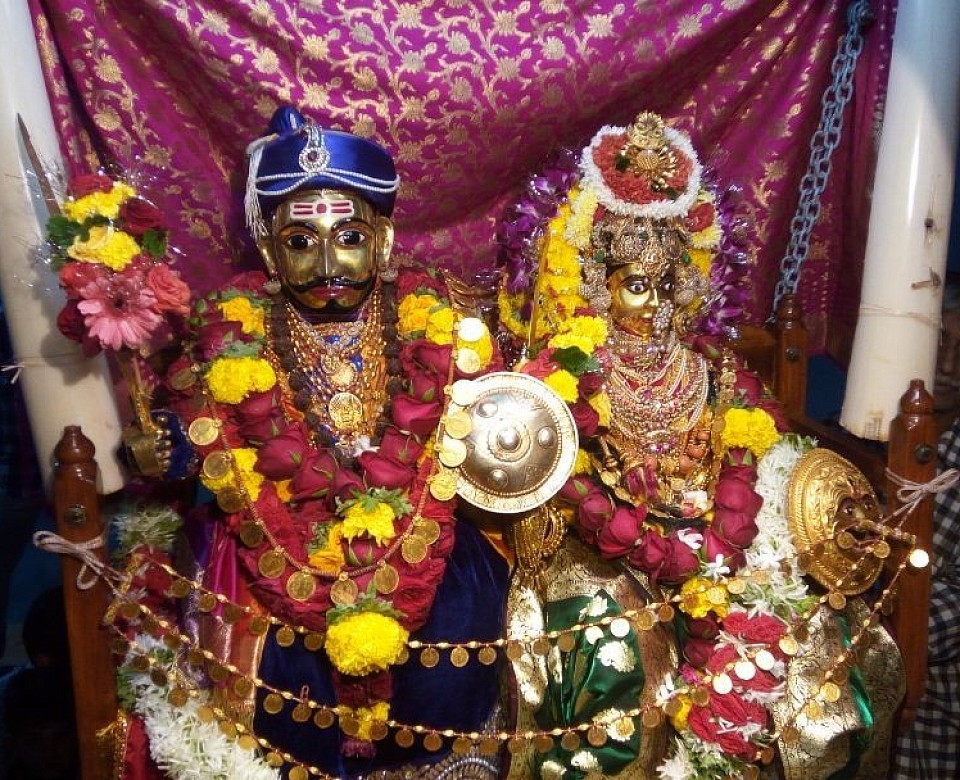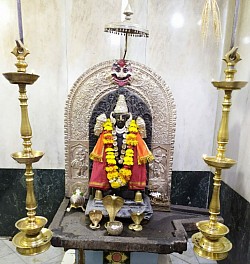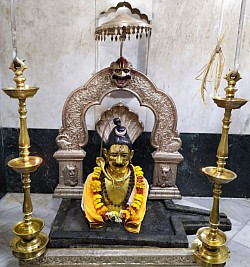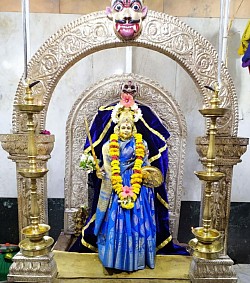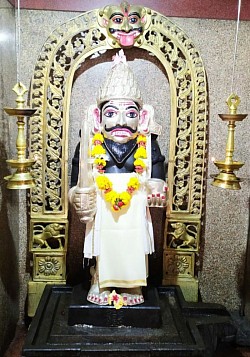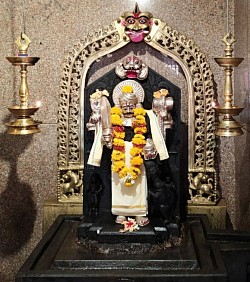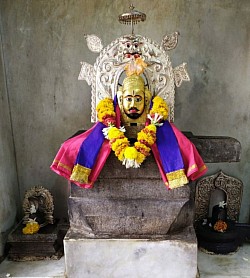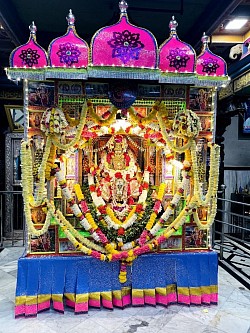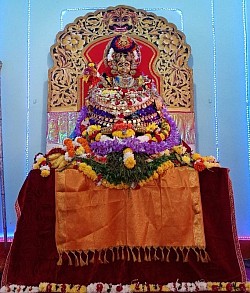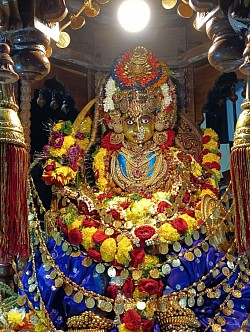SHREE KAMAKSHI SAUNSTHAN SHIRODA GOA
HISTORY
The Temple In Goa, the temple of Shri Kamakshi is located amidst hills in the picturesque village of Shiroda and was built in the late 16th century. The village of Shiroda is situated in South Goa, 12 Kms from Ponda town and 22 Kms from the city of Margao. In the village of Shiroda, a huge Mahadwar or temple gate leads to the Kamakshi temple complex known as 'Sthal' or more commonly called 'Thal'.
The temple of Shri Kamakshi faces eastwards and has a large Sabha Mandap or the traditional open entrance hall. In front of the temple, one can see a tall Deepasthambh or the lamp tower. The complex also includes a holy water tank further in front of the temple. Inside the temple, there is a square shaped chowk, Gan used for conducting the Prasad ritual.The Kamakshi temple also has Kshetrapals like Shri Betal and Shri Kalbhairav. Another shrine in the Prakar has deities like Shri Rayeshwar or Lord Shiva, Shri Lakshminarayana or Lord Vishnu with his consort, Goddess Laxmi, and Shri Shantadurga.The palanquin procession of the idol of Shri Kamakshi and Shree Laxmi Narayan is taken around the temple premises, every Amavasya. Thousands of devotees throng the temple for darshan on this day. In addition, the palanquin procession of Shri Rayeshwar is held in the temple premises on Chaturdashi and that of Shri Shantadurga on Panchami.In addition, the annual festivities are held at the temple during the Navratri/ Dussehra period and at the time of Jatra in spring. The Divja procession held during the Jatra, wherein countless married women walk around the temple in the evening, holding Divja or clay lamps, offers a spectacular site.
The idol of Shri Kamakshi at Shiroda is believed to have come from Guwahati in Assam, where she is known as Kamakhya and which is her original abode. The original Shri Kamakshi temple was located in Raia village in the Salcete taluka. The deity however, was shifted to Shiroda village in Ponda Taluka between 1564 and 1568, as Captain of Rachol, Diogo Rodrigues, the then representative of the Colonial Portuguese regime in Goa, destroyed the Raia temple as a part of the ongoing inquisition. It is believed that a potter from the Raia village, accompanied by some worshippers of the deity smuggled the idol of Goddess Kamakshi across River Kushavati to safety in the Shiroda village.
Initially, the people accompanying the deity stationed themselves at Vazem, in Shiroda and later at the Bharbhat Ward. However, they still felt unsafe due to the location of Portuguese military headquarters across the river at Raiture Fort, and then moved to Thal, Shiroda, the present location.
The Legend
The Kamakshi Mahatmyam in the Sahyadri Khand of the Skandha Purana speaks about the deity. According to it, a respected Brahmin -Agnimukh residing in a place called Rai (present day Raia) once sent his son named Gunakar to forest, for collecting dry grass used in the Puja or religious ritual. However, the demon Mahishasura swallowed the Brahmin boy. When Agnimukha approached Hara and Hari, the local protectors, they advised him to seek the help of the deity, Shri Kamakshi. Following such a request, the deity came to the aid of Agnimukh and challenged the demon for a battle. Having been hit by a bolt, Mahishasura sought pardon from the deity and returned the Brahmin's son to her. He then left for Patal or the netherworld. Agnimukha subsequently requested the deity to reside in Rai region and she decided to do so permanently. This description is found in the first three Adhyays or chapters of Kamakshi Mahatmyam. The fourth Adhyaya narrates the tale wherein Shri Kamakshi assumed the form of Mahishasuramardini and killed the demon Mahishasura.
